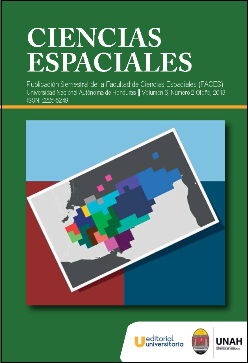Analysis of the temporal behavior of biomass in pastures Department of Olancho in the context of global change - Phase I
DOI:
https://doi.org/10.5377/ce.v6i2.2467Keywords:
Landsat, pastures, radiometry, biomass carbon stocksAbstract
According to the guide of good practices Intergovernmental Panel on Climate Change (IPCC), remote sensing techniques are suitable for the estimation of carbon sinks from the biomass estimate. In this work, conceived in two phases, a time series of Landsat images will be used to estimate the amount of grass biomass in the Department of Olancho. In phase I, the study area has been derived from the analysis of spatial information provided by the National Land Information System (SINIT) and visual analysis of Landsat images and high resolution images. We obtained an area of grass cover in the department of Olancho 670,749.79 ha representing approximately 28% of the total area of the Department. Measurement protocols were developed for field radiometry standardization and reliable survey information collected by staff of the Radiometry Laboratory of the Department of Science and Geographic Information Technologies.
Revista Ciencias Espaciales, Volumen 6, Número 2 Otoño, 2013; 48-60
Downloads
1214




